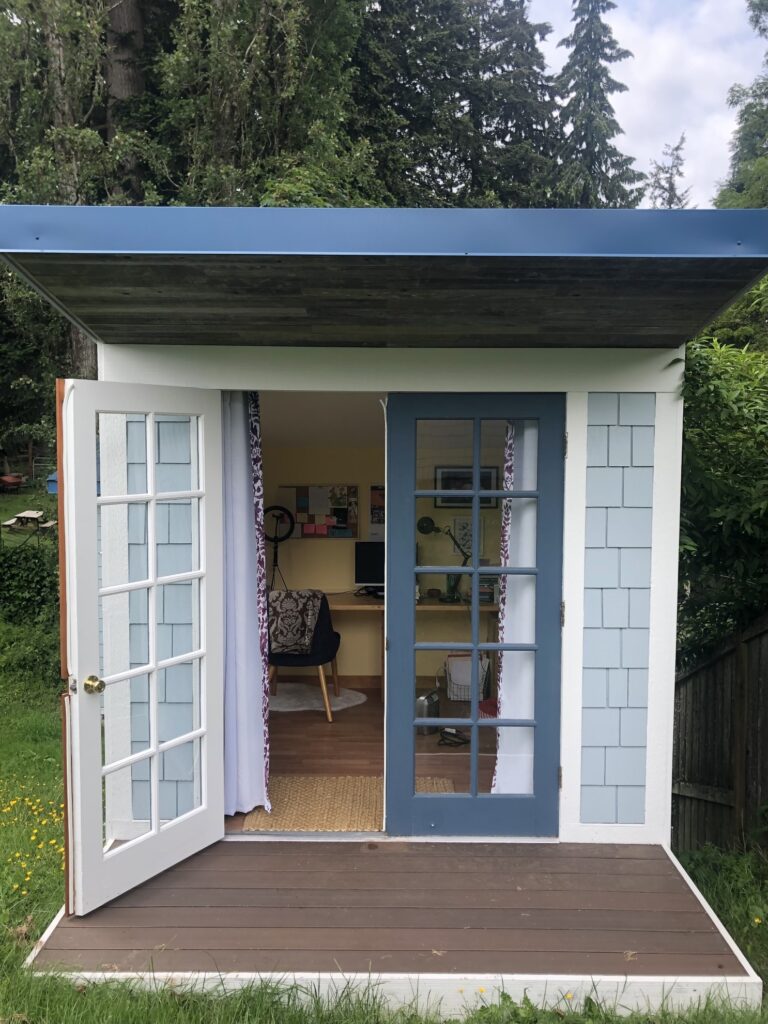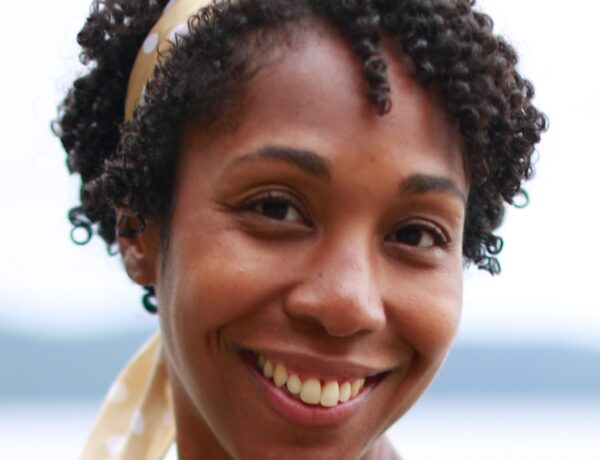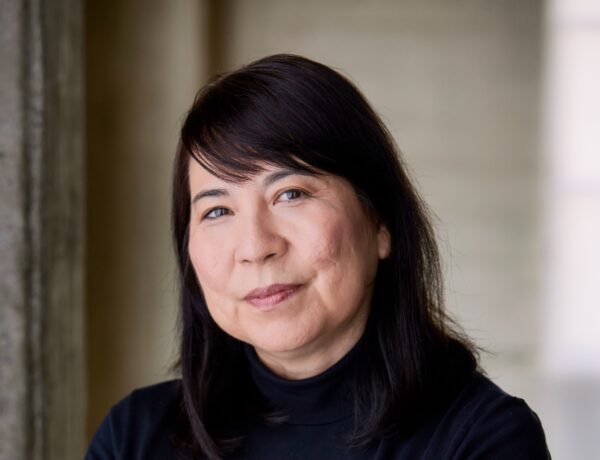Kirsten Sundberg Lunstrum is the author of three collections of short fiction – This Life She’s Chosen, Swimming With Strangers, and What We Do With the Wreckage (which won the Flannery O’Connor Award for Short Fiction in 2017 and was published by UGA Press in 2018).
Her short stories have been published widely in journals, including One Story, Ploughshares, McSweeney’s, North American Review, The American Scholar, and Willow Springs. She has been recognized with a PEN/O. Henry Prize and fellowships from MacDowell, the Sewanee Writers Conference, and Seattles’ Jack Straw Writers Program. Kirsten teaches in person and online through Hugo House and lives with her family near Seattle.
Each week, we publish a new daily writing routine from a famous author. Subscribe to our newsletter so you don’t miss out!
Hi Kirsten, it’s really exciting to have you here with us today! I recently finished What We Do with the Wreckage and it was an incredibly inspiring read. For those who may not know, can you please tell us a little bit about yourself?
I was born in Chicago and had a fairly transient upbringing, moving every couple of years through most of my childhood as my family followed my father’s professional posts (he’s a retired Lutheran minister), but we always considered Washington State – where my grandparents and extended family lived – “home,” and eventually we settled there as well. My family is close, in part because of all the moves we made, and much of my writing focuses on the intricacies and complexities of the close bonds of family.
My parents are both big readers, so there were always books everywhere in our household, and we talked a lot as a family about what we read and what we were thinking about or working on. My mother is a fiber artist, and my father writes poetry and is a visual artist, and they were great about taking my sister and me to bookstores and libraries and museums as family outings when we were young, so I feel that I was encouraged – always – to pursue creativity. Whereas I know many writers whose parents actively discouraged them from a professional life in the arts, I’ve been lucky to be supported from the start.
That meant that I knew pretty early on that I wanted to write, and I studied creative writing and literature in college, then did a graduate degree in fiction writing at UC Davis. My first book was my graduate thesis, and since then (2005) I’ve been writing and publishing fairly continuously, as well as teaching writing and literature at various colleges and – for about 10 years – as a high school English teacher (which was a job I absolutely loved).
Growing up in a family of big readers, do you remember the first book you fell in love with?
Books are so present in my earliest memories that I’m not sure I could name the first book I loved. My mom read to my sister and me every afternoon when we were small, and my dad read to us every night at bedtime, so between those two parents and their various tastes, my sister and I were treated to all of the Beverly Cleary and Judy Blume and Madeleine L’Engle and Laura Ingalls and Katherine Paterson books, The Hobbit and Watership Down and all of E.B. White’s children’s books, Little Women and Anne of Green Gables, and so many others. One thing I’ve loved about parenting has been re-reading all of those beloved books of my own childhood to my kids. They are all books that still resonate.
Can you take us through the creative process behind your 2008 book, Swimming With Strangers?
Swimming With Strangers is my second book, and the stories in it were written over a period of two or three of the busiest years in my life. I used the bit I had earned from my first book to afford teaching just a little less so that I could write, but then my husband (who was teaching photography then) was offered a visiting professorship at another university, so in the midst of my drafting we moved, and we also had our first child.
Motherhood radically shifted the creative process for me. Suddenly I didn’t have leisure time. I learned to write in smaller increments, to really focus, and to be able to write anywhere. I think I was probably a little precious about my writing process before I had kids – like, “I only write between 3 p.m. and 7 p.m.” or “I need total silence in order to be productive.” But that ended with motherhood. I wrote in the car, pulled over along the side of the road while my baby slept in his carseat in back; or I got up early in the morning to get a few paragraphs down before my husband had to leave to teach; or I traded time with friends, one or the other of us taking a turn watching the kids so the others could work.
It was hard, but it taught me that the creative process isn’t fragile. The conditions do not have to be perfect. That lesson has proved so incredibly helpful to me in the years since then, and I’ve been a more productive writer because I trust that I can get the work done no matter what else is competing for my time and attention.
How did the COVID-19 pandemic and lockdowns affect your routine?
Like many writers, I was writing through lockdown. My school was within close proximity to the first COVID outbreak in the U.S., and so we were one of the first places to move to online classes in early March of 2020, and then I didn’t return to in-person school until September of 2021. The stillness and isolation was so hard for my students (and for my own children), but the other side of that remove from “normal” life was that suddenly hours and hours of each week that previously would have been filled with social obligations and school meetings were vacant.
Beyond that, I was also – like everyone in the world – just really frightened, and my professional life as a teacher was in turmoil, and so writing became an anchor for me. When I was writing, all of this world fell away and I was submerged in the world of the story. What that meant was that the novel I started writing in October of 2020 was a fully finished draft in August of 2021. (The novel is titled Atalanta and is an historical mystery, set on a remote island in Puget Sound. It’s on the market and looking for a publisher now.) I kind of marvel at how quickly it happened, but that period of time was intensely creative for me, probably because of both how emotionally difficult everything outside of the novel felt, and also because the isolation of lockdown just distilled my sense of concentration.
The takeaway, for me, is again validation that creativity is resilient, that work can happen in the strangest and most difficult of circumstances. That, and also a reminder that we need art. Especially in the most challenging moments of our lives, art reminds us of the meaningful and gives our days a sense of deep purpose. I’m grateful to be able to tap into that purpose through writing.

What does a typical writing day look like for you?
I am not a write-every-day writer. I used to lament that, but now I know that it’s not my process. I go through periods of intense production – and during those, I do write everyday and often for hours. But I also have long stretches of time when I am not writing, and I value those periods now too, as I have learned that even though I can’t see it when I’m in those fallow phases, I’m gestating the ideas that will become the next project. I need the not-writing as a period of rest and restoration in order to write again in the future, and so I no longer feel guilty about not writing every day as I once did.
When I am in a writing-daily phase, however, my typical routine is pretty flexible, depending on the needs of my family and day job (I’m a teacher, so I do have breaks in the year, and I try to use them for writing as much as I’m able). I have a little studio in my backyard – an 8×8 foot room that my husband built for me a few years ago, where I can be both accessible if my kids (who are teenagers now) need me, but also removed enough that I have space and quiet from the family. I tend to disappear out there between breakfast and lunch, and then between lunch and dinner – so I’m writing for maybe six or seven hours total.
In that time, I start by reading over what I’ve written the day before, which also becomes editing what I’ve written the day before, and then I move into new material. I don’t work from an outline if I’m writing short fiction, but I just finished my first novel, and I did develop an outline for that as I wrote, simply because the size of the story necessitated keeping timelines and scenes organized outside of my head. I often end the day’s work by making a couple notes for myself about where I might go next, or what I’m still questioning. And then I’m also always reading, reading, reading. Other people’s work (fiction, poetry, nonfiction – all of it) helps me see more clearly and inspires me to want to put my own words on the page.
What are some of the books you’re currently enjoying at the moment?
The books I’ve read most recently that have really stuck with me are Danielle Evans’s brilliant story collection The Office of Historical Corrections, Ida Jessen’s beautiful novel A Change of Time, Sara Freeman’s completely immersive novel Tides, and Sarah Moss’s gorgeous (and haunting!) novella Ghost Wall.
What does your writing workspace look like?
I’m attaching photos, but I’ll note that the space is just big enough for a chair, desktop, and it’s only about 10 feet from my backdoor. I’ve filled it with objects that have some meaning to me – artwork people have made for me or prints I picked up because they looked like visual stories, my great grandmother’s inkwell and my grandmother’s paperweight, little trinkets that my children have crafted over the years – that sort of thing. When I’m there, I feel both alone and connected, which seems ideal for writing.


Before you go…
Each week, we publish a new writing routine from a famous author. Subscribe to our newsletter so you don’t miss out!



No Comments